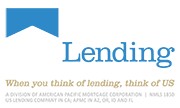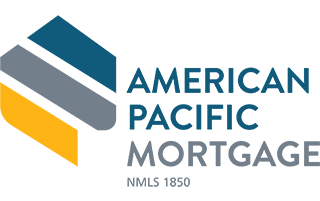Is it Possible to Buy a House With No Money Down?
If you’ve ever felt you couldn’t afford a mortgage, you’re not alone. Today in America, dreams of owning a home seem unattainable for many of our friends and neighbors. This is due to the high upfront down payments and the hangover of foreclosures from the Great Recession. Many cannot scrape together the 20% down(1) that comes with a traditional loan. In fact, we are at an all-time low for home ownership according to the USA Today. “From 1985 to 1995, approximately 64% of American households owned the home they lived in. This increased to 69% at the peak of the housing bubble in 2005, but it has fallen steadily since. The national homeownership rate in the United States today is 63.5%. The last time it was this low was three decades ago.”
What Does No Money Down Mean?
The good news is it is entirely possible to obtain a mortgage with no money down. That means that using new programs and assistance, you can get a mortgage without the traditional 20% down(1). From VHA loans to down payment assistance programs, it is more possible than ever to get a mortgage with no money down.
How Do I Get a No Money Down Loan to Buy a Home?
To obtain a loan with no money down you will need to begin with evaluating the options you could qualify for. Here is a quick look at these loans and who is eligible:
| Loan Type | Eligible Homebuyers |
| FHA (Federal Housing Authority) Loans | First-time homebuyers |
| USDA Loans | Rural homebuyers |
| VA Loans | Veteran homebuyers |
| Navy Federal Credit Loans | Navy Veterans |
| Traditional 97% Loan to Value | All homebuyers |
Once you pass the eligibility hurdles, you may find you qualify for a few options, so the next step is to dive into the loans available to you.
VA Loans
The VA Loan program was established to help veterans realize their dream of home ownership. Not only do VHA loans allow veterans to finance a home with no money down(2), they also waive many of the typical mortgage loan requirements. They do require a one-time funding fee of 2.15%(2) which can be financed into the loan.
USDA Loans
Another option is the USDA loan program, made available thanks to the U.S. Department of Agriculture. Their goal is to help rural homebuyers acquire a mortgage without the barrier of a high down payment. If you look around and think you don’t live in a rural area, think again. 97% of the country is in an eligible area so do not discount your eligibility for this loan just because you do not consider your town rural. In fact, you can use this tool to enter your intended town or address and see if you are eligible.
Alternative Options
In some cases, you may find you are unable to find the right loan to cover the entire down payment. That’s ok, there are still options for you. One option is to look at low down payment loans or find alternative ways to pay for the down payment. There are programs for down payment grants, no-interest second mortgages and gifts for down payment.
Down Payment Grants and Assistance
Many homebuyers are surprised at the opportunities that exist to obtain down payment grants or assistance. Contrary to this belief, these types of programs are available and are designed to help homebuyers who do not qualify for the no down payment loans. Like a piggyback loan, some loan assistance programs offer an interest-free second mortgage(3) to cover the down payment. Better still are the programs that offer grant money that allows you to pay a down payment with an obligation to pay it back. A recent article from Bankrate suggests that our own perceptions on down payment assistance are skewed from reality and therefore these options are overlooked.“When you think of down payment assistance, you think of borrowers that are income-challenged, but these are not just for low-income folks,” says Deborah Holloway, a senior loan originator with Christensen Mortgage Services in Melbourne, Florida. They are for working people who make a decent income but don’t have enough to save for a down payment.”
80/20 Loans (Piggyback Loans)
A piggyback loan is another way to pay for your down payment without going out of pocket. With piggyback loans homebuyers take out two loans to cover the cost of a home: one for 80% of the price and one for the final 20%(4). Each loan will have their own terms and generally the smaller loan will come with higher interest although you can find deferred payment junior loans. As the buyer, you will still need to cover the closing costs for both loans.
Private Lenders
The loans we have examined until now are the most traditional and widespread options for buying a home with no down payment. However, it is also possible to find options from private lenders that allow you to finance without a large upfront down payment. If the traditional routes do not fit your background, a good place to start is with local banks and credit unions.
How to Turn Low-Payment Into No Upfront Payment
The alternative to a zero down payment mortgage is a combination of a low upfront loan with a program that will finance your down payment. A few ways to do this are gift funds, down payment grants and taking out an additional loan like a deferred junior loan or an 80/20 piggyback loan.
FHA Loans
An FHA loan is a home loan from a private lender that is insured by the FHA. Since 1934, the FHA loan program has helped first time home buyers on the path to ownership. They offer low down payment requirements and are relatively generous with credit scores. FHA loans eligibility dictates that a buyer must put a 3.5% down(5) and meet with a list of requirements. You can turn this low payment mortgage into a no down payment loan by funding your down payment from approved gifts.
FHA 203k Loans (Home Renovation Loan)
If you love a home that needs some work a FHA 203k Loans or Home Renovation Loan could be the ideal mortgage for you. This type of mortgage not only finances the purchase of the home; it also allows you to build in costs for renovations. It does come with the standard FHA 3.5% down payment (5) requirement but you can acquire gifts to cover this much like a traditional FHA loan.
You can also finance temporary housing while your new home is a construction zone. To qualify you cannot be an investor and you must purchase a 1-4 unit property. The drawbacks are FHA 203k Loans are notorious for a very regimented process that requires paperwork and complete adherence to rules. Do to the knowledge needed to work with a FHA 203k you may find that even if you have a great contractor in mind, they may not be able to perform your renovations.
Conventional 97% LTV Mortgage
Fannie Mae and Freddie Mac now offer conventional 97% LTV mortgages—this means that you can get a home loan with an even lower down payment than an FHA loan. If you want to finance this loan along with your 3% down(6), borrowers can turn to gift funds. The requirements for credit on this loan are lower than others but you must meet these criteria:
- Purchasing a one-unit single family home, co-op, PUD, or condo
- One homebuyer has not owned a home in three years
- You will use the property as primary residence
- The loan amount is at or below $453,100
How to use Gift Funds for 100% Down Payment
FHA loans come with restrictions on how you fund your down payment. The good news is one of these approved sources is a gift. However, this program does scrutinize your gift givers.
According to the FHA, an outright gift of the cash investment is acceptable if the donor is:
- The borrower’s relative
- The borrower’s employer or labor union
- A close friend with a clearly defined and documented interest in the borrower
- A charitable organization
- A governmental agency or public entity that has a program providing home ownership assistance to low- and moderate-income families, or first-time homebuyers
They are looking very carefully to ensure a gift giver does not fall in these categories:
- The seller
- The real estate agent or broker
- The builder
- An associated entity
These parties have a vested interest in the home sale. If you receive any gifts from these sources, they are considered inducements to purchase, and must be subtracted from the sale price.
What Are the Pros and Cons of Buying a House With No Money Down?
Every consumer has a unique situation to examine as they begin down the path to home ownership. So, while a no money down loan may sound appealing, it is important to weight the pros and cons and look at your long-term goals before making a final decision.
Pros of No Money Down Loans
No money down loans can put home ownership in reach for many of Americans. Also, due to the catastrophic housing market collapse, the information and processes surrounding these options has improved. The other benefit to no money down is financial stability. Instead of draining your rainy-day fund to buy a home, borrowers can buy a home and still have money on hand for the future.
Cons of No Money Down Loans
When you opt for a no money down loan you start home ownership at zero equity—meaning you have no equity from the first day you take the keys. This can make it hard to build equity in the years following your initial purchase.
The other con is the overall costs of these loans. You also can expect to pay a higher interest rate than a traditional 20% down loan. Finally, most no down payment loans come with personal mortgage insurance that is calculated and added to your monthly payment. You pay PMI until you reach the 80/20 ratio. Again, this equates to more cost over the life of the loan.
Summing it Up: Should I Buy a House with No Money Down?
Deciding on the right mortgage for you is a big step. But like any big decision, doing your research and asking questions along the way can help you feel confident in your final decision. We invite you to also consider turning to lenders for help as you evaluate a no money down option. They are a great resource as you begin this journey and can help guide you along the way.
If you would like to explore a no money down mortgage, we would love to speak with you.
Click Here to Speak With a Specialist
LEGAL
1. Example: 30 Year Fixed: Loan amount $300,000, 20% down, monthly P & I payment $1,475.00, APR 4.389%
2. Example VA: Loan amount $300,000, 0% down, monthly P & I payment, $1,844.77 APR 4.432%, a one-time funding fee of 2.15%
3, 4. Qualifying factors may apply
5. Example FHA: Loan amount $300,000, 3.5% down, monthly P & I payment $1,501.74 APR 5.395%, FHA monthly MI is $211.00
6. Example 30 Year Fixed: Loan amount $300,000, 3% down, monthly P & I payment, $1686.00 APR 4.736%
The views, articles, postings, and other information listed on this website are personal and do not necessarily represent the opinion or the position of American Pacific Mortgage Corporation or US Lending Company.
* For loan examples and more information visit our disclosure page at https://www.uslendingcompany.com/disclosures/





